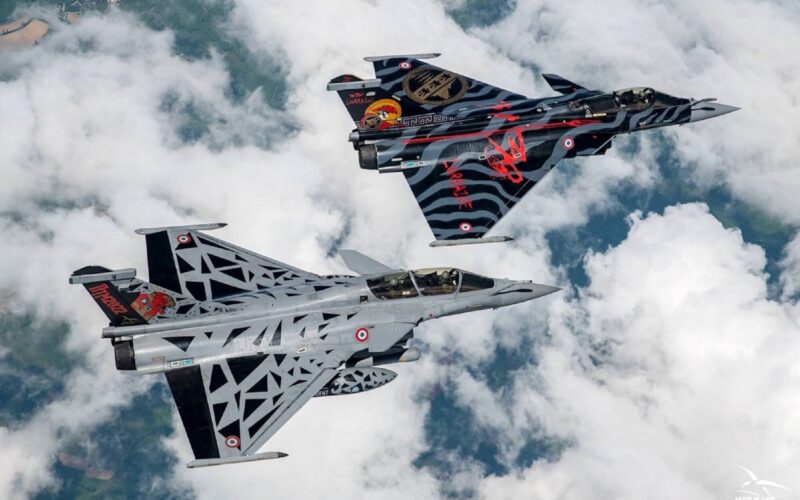In May 2022, two French Air and Space Force Rafale fighters collided mid-air during an air display at the Cognac air show in the southwest of France. Both pilots escaped unharmed and managed to land their aircraft. The final report of the French Investigation Bureau for State Aviation Safety (BEA-E) on the incident outlines a series of human and organizational factors that led to the collision.
What happened?
On May 22, 2022, two pilots from the Vautour Bravo tactical display team of the 30th Fighter Wing were conducting a basic tactical presentation involving Rafale C fighter jets at the Cognac National Air Meeting. Unlike air displays conducted by aerobatic teams, basic tactical presentations are composed of sequences of non-complex maneuvers that fighter pilots perform during operational training.
The two pilots had successfully completed the same presentation the day before and had practiced the program eight times in real training sessions and four times in simulators. Weather conditions were ideal for the presentation, with no restrictions in place, and both aircraft were deemed airworthy and in accordance with the maintenance program.
The incident occurred towards the end of the presentation when the pilots performed a “show of force” (low-altitude, high-speed pass) along the air base runway, used as the presentation axis for the display. The leader initiated a sharp 180° right turn followed by a steep climb to execute a maneuver known as an “oreille” [ear in French, known as a high-speed Yo-Yo in English – ed. note], to prepare for the next figure.
The wingman followed, intending to follow the leader in close formation, but he noticed a significant closure rate due to the leader’s unusually steep climb. Questioned by the wingman, the leader indicated on the radio flying at a speed of 200 knots, which was lower than the typical 250 knots during this phase.
The wingman requested an acceleration, prompting the leader to increase power and adjust the aircraft’s pitch downward as the wingman approached from behind and beneath. Yet they could not avoid colliding, resulting in two successive impacts that caused substantial damage, including the loss of the wingman’s vertical stabilizer and significant damage to the leader’s right canard.
Despite the damage, both aircraft remained controllable, and the pilots managed to land safely at the 709 Cognac-Châteaubernard air base. Both pilots emerged from the incident unscathed. Debris from the collision damaged a house in the nearby town of Gensac-la-Pallue.
Lack of organization and air display experience
The investigation into the causes of the mid-air collision points to organizational and human factors. It found that a decision to deviate from the originally planned parameters for the “oreille” maneuver, including a steeper climb, different altitudes and slower speeds, was made during training.
However, it was not formally validated or documented, introducing unforeseen risks. The complexity of the modified program reduced the margin for error during the maneuvers. Additionally, the lack of spatial awareness and poor communication between the pilots during a critical phase of the presentation contributed to the collision.
The team’s limited experience in performing air displays for public audiences, combined with a desire for an aesthetically pleasing presentation and overconfidence, may have downplayed the associated risks.
The interruption of air shows for two years due to the COVID-19 pandemic further eroded the collective experience of the “Vautour Bravo” team in performing in front of live audiences and thus contributed to organizational mistakes and stress factors.
Recommendations to prevent future incidents
The report highlights the difference in skills between aerobatic teams such as the Patrouille de France, which are experienced in public presentations, and the tactical display teams of the French Air and Space Force composed of fighter pilots. As a result of the investigation into the mid-air collision during the Cognac National Air Meeting, the BEA-É has identified several recommendations directed toward the French Air and Space Force, aimed at enhancing safety and preventing similar incidents in the future.
The BEA-É recommended that the French Air and Space Force involve external expert pilots, such as air display pilots, to review and evaluate the content of tactical presentation programs before their formal validation. This external perspective can provide valuable insights and help identify potential risks or deviations from safety standards.
To increase awareness of the risks associated with public displays during airshows, the BEA-É suggests that the French Air and Space Force implement a more structured and formalized training and awareness program for tactical presentation teams. This training should focus on understanding the unique challenges and considerations when performing in front of live audiences, including the potential distractions and stress involved.

